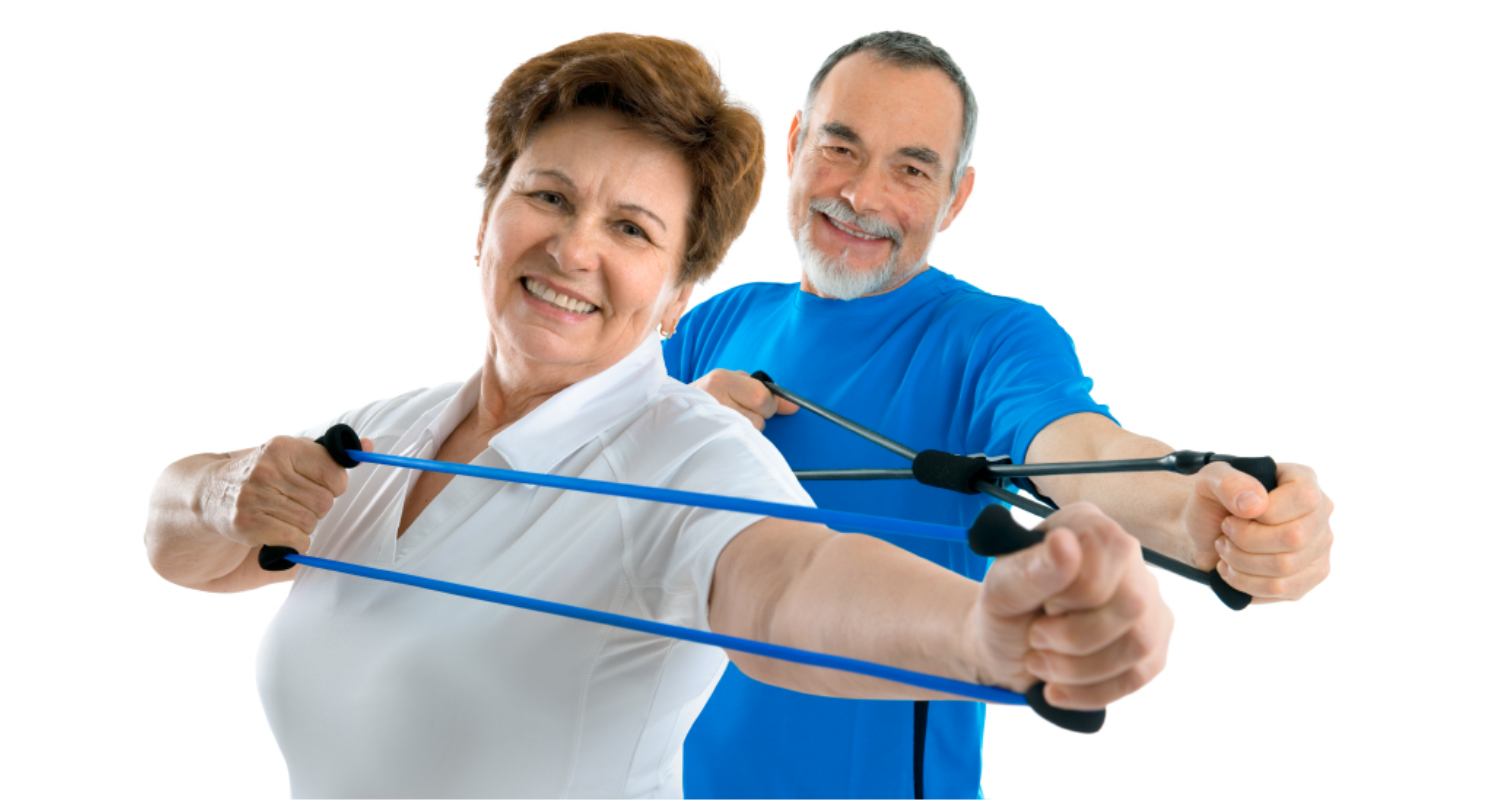Older people, like younger, are excellent candidates for interval training.
Interval training has been shown, via studies, to be not only safe for older individuals, but quite beneficial in multiple ways.
When many think of interval training, they envision someone running like mad up a steep hill, or jumping up and down on an 18 inch stool at a rapid pace.
However, interval training isn’t about mode of exercise (e.g., sprinting, hill dashing, bounding up stairs, jumping rope, and of course, lower impact activities like pedaling, walking and swimming). It’s about the training scheme that’s directed at the mode.
Aerobic interval training (AIT) consists of short intervals of aerobic activity that’s higher than the level one can sustain for a prolonged period, but not so high that the trainee can hardly breathe at the end.
The “work intervals” may last 30 seconds to a few or several minutes, and are alternated with recovery segments that may last a few to several minutes.
The rate of perceived exertion (RPE) is a measure of how someone perceives effort and fatigue during an exercise set. A rating of 1 is how you’d feel if lying on a hammock. A rating of 10 is how you’d feel if trying to outrun a grizzly bear. For AIT, the work interval might be a 5 to 7, while the recovery period may be a 3 or 4.
The physical condition of older men and women varies quite a bit. Though AIT is generally safe, the mode is the variable. For example, a 65-year-old woman with osteoporosis may not be a suitable candidate for jumping exercise. A senior trainee with painful osteoarthritis in the knees would benefit more from pedaling than hard walking.
An apparently healthy older adult, however, may actually be able to jog or perform vigorous hill walking, even some low-box jumping and stepping drills.
Benefits of Interval Training for Older Individuals
The very nature of AIT reduces the risk of repetitive stress injuries, shin splints, etc., since the work segments are brief. The cardiovascular benefits are amazing.
A report in Clinical Autonomic Research shows that interval training in elderly men (14 weeks using a stationary bike) improves heart rate variability (HRV).
Good HRV, to put it in layman’s language, is the ability of the heart to quickly recover to a baseline rate after brief periods of physical stress are repeatedly introduced and then replaced with easy activity.
A study in the European Journal of Physiology showed that AIT was able to significantly improve maximal aerobic power and submaximal exercise tolerance in seniors. The mode was that of walking and jogging on a track. A Mayo Clinic study examined older adults (mean age of 63) who did at least five sets of three minute moderate walking intervals alternating with three minutes of high intensity walking. The conclusion was that high intensity interval walking may be protective against age-related increases in blood pressure, as well as reduction in peak aerobic capacity and strength in the quadriceps and hamstrings.
As impressive as that all is, it doesn’t stop there. There’s a psychological benefit as well: It’s less intimidating. To many older people who have never performed structured exercise, and especially who may have a condition like arthritis, joint replacement, a “bad back,” heart disease and diminished energy, a nonstop bout of physical work can seem daunting.
AIT offers an alternative: The work lasts only a few minutes or less at a time, and the session includes periods of easy activity.
Elderly men and women can feel confident about taking up interval training for its many benefits. Remember, it can be done via walking and pedaling, not necessarily harder forms of movement.

Leave a Reply